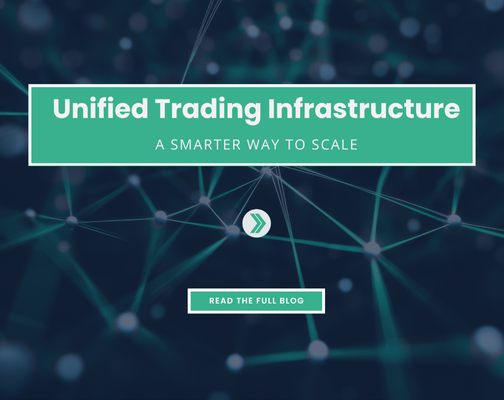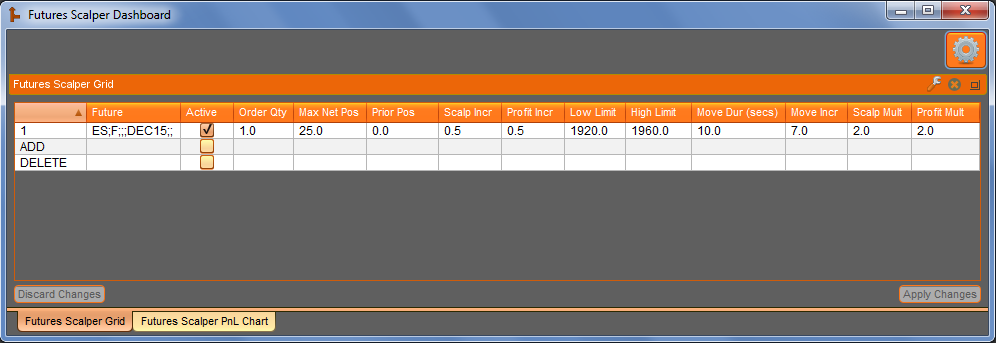Futures Scalper
The “Futures Scalper” job allows the user to automatically trade specified futures contracts around user-defined scalp and profit intervals. The job generates appropriate new opening and/or closing orders after each trade execution. Security features are included that allow the user to specify both the absolute price range to operate within and the maximum net position permitted. Optional stop loss behavior is available, as well as the ability to optionally bias the algo toward initially buying or selling.
After an initial fill, the “Futures Scalper” will place a new buy order below that price and a new sell order above that price. New orders that add to the established position are placed at the scalp interval, while new orders with position-closing effect are placed at the profit interval. Users can choose between two different modes of booking orders: either persistent order mode (which can allow multiple orders to become laddered in the book for better queue position) or non-persistent order mode (which will never book more than one order above and/or one order below the current price). An optional user-configurable smoothing parameter allows the algo to compute a “true price” point in realtime. This “true price” involves a double-weighting of both volume-at-price and time-at-price. This feature can enhance the profitability of transient, small-scale deviations away from the “true price” by dynamically expanding the profit interval at appropriate times.
The “Futures Scalper” job also contains logic to widen out intervals by a user-defined multiplier in the case of increased volatility. By allowing the user to set a “move duration” and a “move size” for each contract, the job will automatically apply a multiplier if the future moves greater than the “move size” within the specified “move duration”. The job’s parameters will return to their normal state once the market returns to normal conditions.
Please contact the developer at kevin@axonetric.com with any questions you might have regarding technicalities, client use cases, etc.
All of the variables below can be configured or modified at runtime. This gives users the power to modify their job behavior throughout the day without having to make code changes.
| Name | Type | Default | Description |
|---|---|---|---|
| smoothing_window | int | 45 | in seconds (2-100), or 0=disabled |
| onPriceLimitsExceeded | int | 0 | 0=work one-sided market only, 1=close out position and deactivate row |
| remainingPositionOnRowDeactivation | int | 0 | 0=leave as-is, 1=close out position |
| algoBias | int | 2 | 0=auto, 1=aggressive, 2=normal, 3=conservative |
| grid_name | string | the main grid will be named ‘scalpers_[grid_name]’ | |
| verbosity | int | 1 | log verbosity: 1=normal, 2=detailed, 3=extended |
| makeOrdersPersistent | int | 0 | 0=no, 1=yes |
| persistentOrderDensityControl | int | 0 | 0=off, 1=opening side only, 2=opening and closing sides |
Related Resources

The True Cost of Real-Time Market Data Infrastructure: Part II Summary
Field-programmable gate array (FPGA)-based market data processing delivers best-in-class performance for ultra-low latency trading environments. However, building and maintaining in-house FPGA feed handlers is unsustainable for many capital markets firms. …

Exegy Research Reveals 5x Cost Savings and 6x Faster FPGA Development vs. In-House Builds
New York, London, Paris, St. Louis – October 29, 2025 – Exegy, a leading provider of market data and trading technology for the capital markets, today released Part II of…

Unified Trading Infrastructure: A Smarter Way to Scale
Over the years, trading firms have assembled a patchwork of infrastructure to meet individual desk and business-line needs resulting in duplication at every layer: multiple vendor stacks, inconsistent performance, and…


